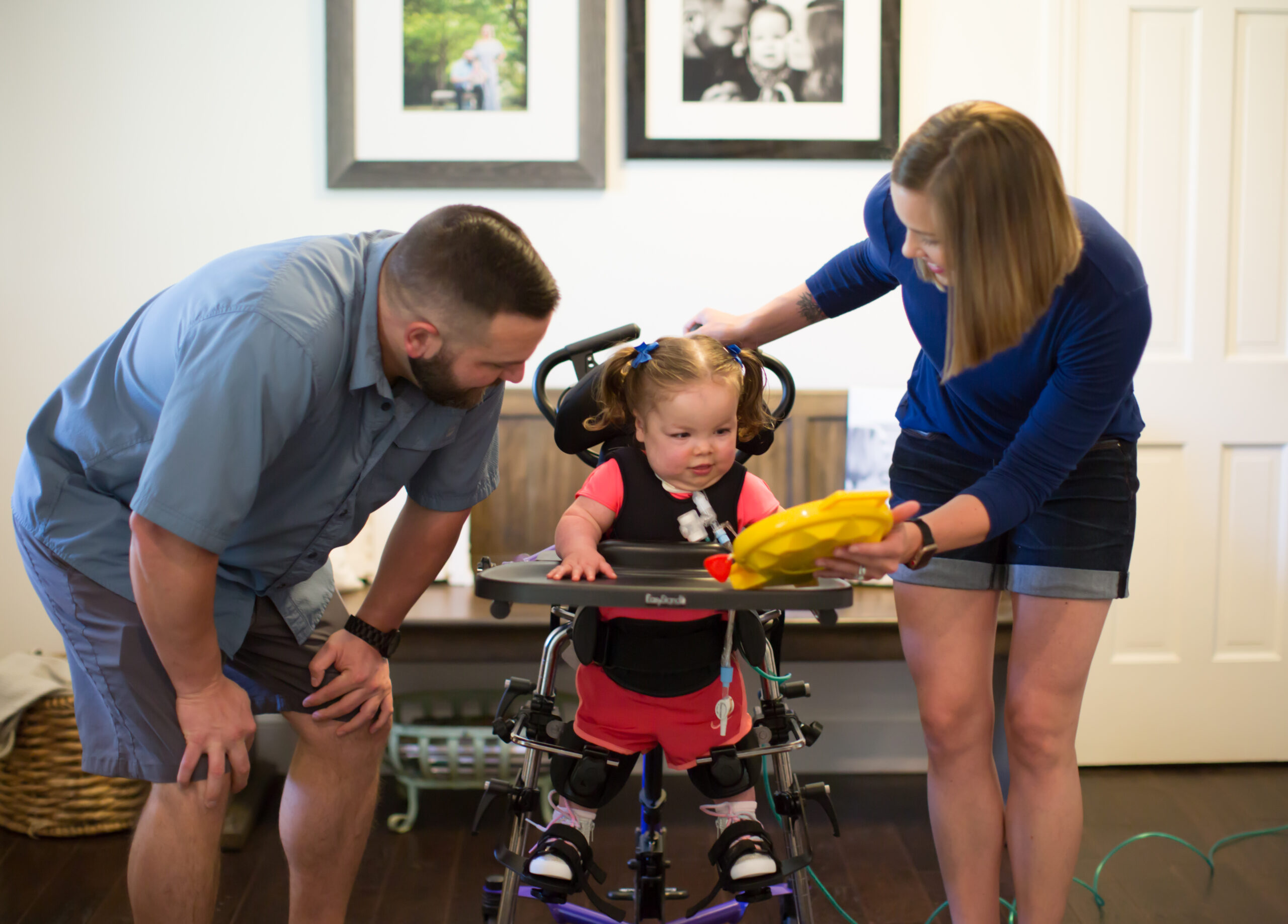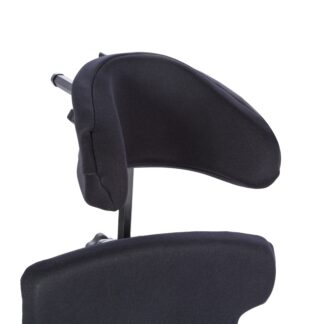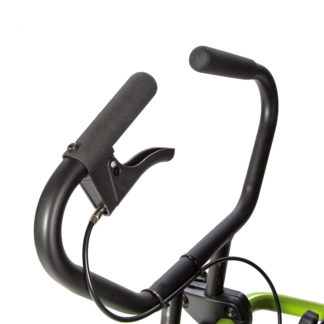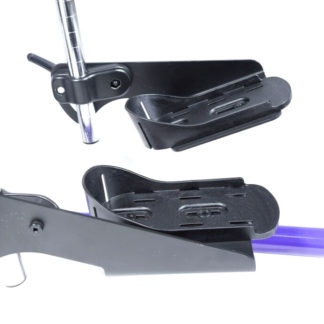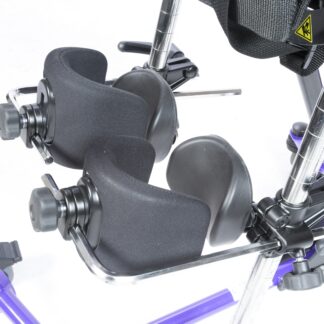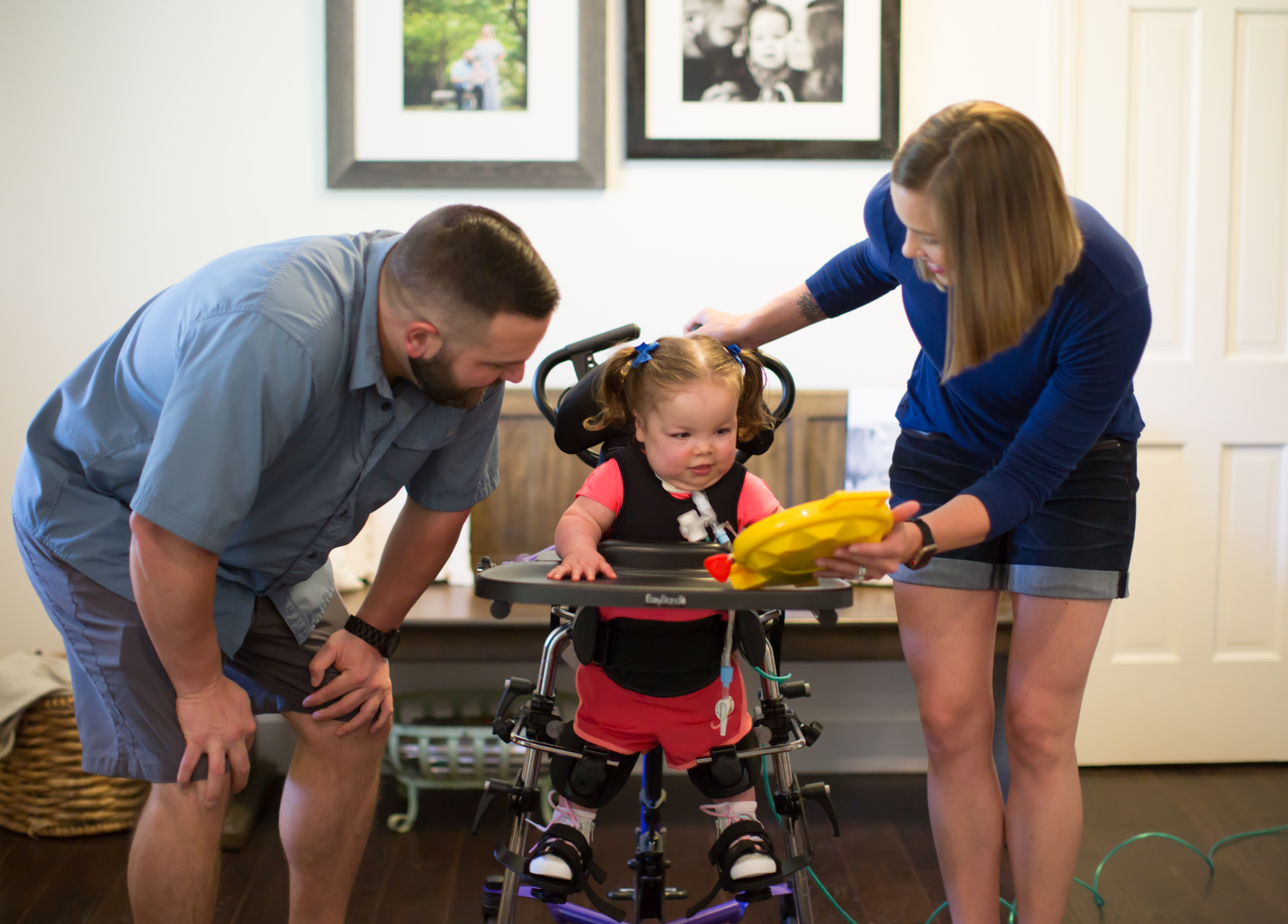
About Remington
Remington stands in the Zing MPS for several reasons – change of position, range of motion and hip development by using the abduction feature. The Zing’s unique ability to pivot two directions enables both supine and prone positioning without having to transfer out of the stander, rearrange pads, foot plates and trays, then transfer back into the stander. A seamless transition from supine to prone provides a therapeutic opportunity found in no other multi-position stander – the ability to quickly transition from supine to prone or vise versa – without a transfer. A good illustration and application is head/neck control strengthening which is often done in short sessions using the prone position, sometimes 5-10 minutes (or less) and fatigue sets in quickly. The Zing’s ability to quickly and seamlessly transition to a slight supine position as a recovery position, but remaining in the stander, provides an opportunity to work on head control in short bursts with ease – something no other stander can do.
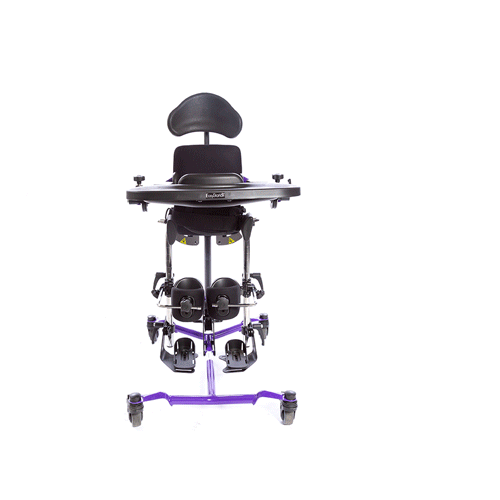
Range of motion and standing in abduction are two other areas the Zing excels. The lower leg support and positioning components available can accommodate tightness in one or more joints and the positioning capabilities ensure a good weight-bearing stretch. The incorporation of abducted standing (standing with the legs partially splayed creating an inverted “V”), provides an opportunity to target hip socket development and working toward overall stability of the joint. Standing in abduction is possible throughout the Zing MPS’ entire positioning range and the anatomically correct design provides a superior abducted standing experience in several ways:
- The leg abduction pivot point is located in alignment with the body’s natural hip pivot, this makes abduction possible using a single knob
- Leg support tubes feature a bend or offset that allow the entire leg to abduct without having to adjust knee supports or foot plates
- Hip supports rotate or float – as the leg abducts the hip supports rotate, maintaining alignment but reducing pressure points
Hip Surveillance
Hip socket development and associated complications for children that are unable to stand unsupported are increasingly being identified as areas of increased concern. One example is the increasing prevalence of Hip Surveillance programs. Standing, and more specifically, abducted standing, has been identified as one therapeutic intervention in some hip surveillance programs.

Why are Hip Surveillance programs being implemented?
One in three children with Cerebral Palsy (CP) will develop progressive hip dysplasia, which can affect their ability to sit, stand or ambulate, as well as cause pain. Early detection and intervention can minimize the need for later procedures or surgeries and improve quality of life. Children with GMFCS levels III-V appear at greatest risk.
• Hip dislocation may be painful and may lead to problems with sitting, standing and changing clothes or diapers.
• Research has shown that children are more likely to get hip dysplasia if they are unable to move or stand.
• Researchers in Australia and Sweden have found that we can prevent hip dislocation by doing regular x-rays and hip exams and implementing other treatment accordingly.
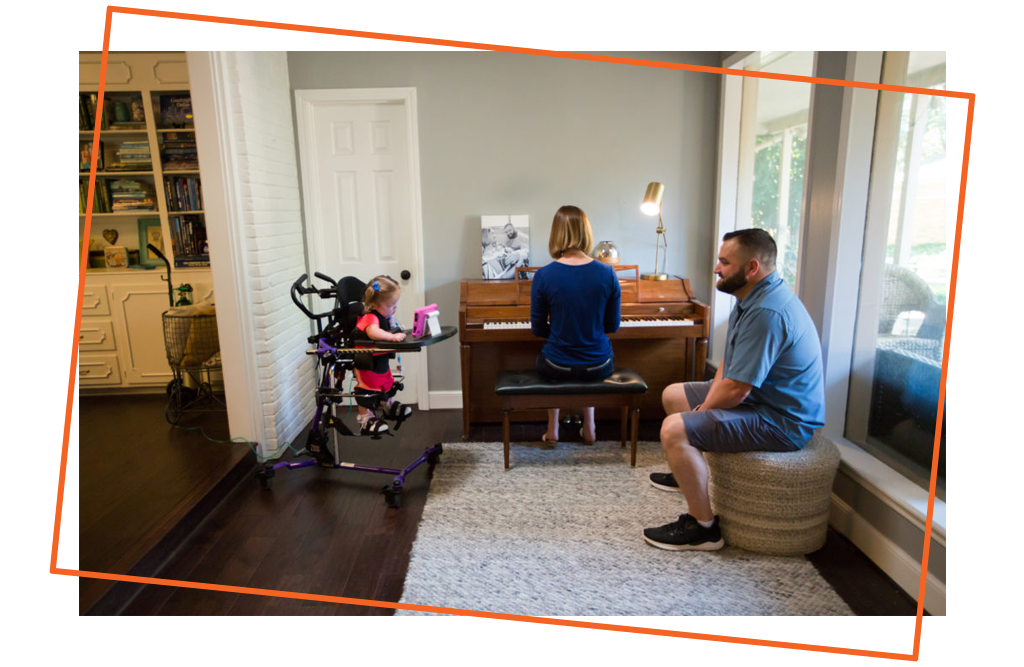
Why are Hip Surveillance programs being implemented?
• Children with cerebral palsy are more likely to have a hip problem called “hip dysplasia.”
• Hip dysplasia is when the thigh bone (femur) and the hip bone (pelvis) don’t grow into the right shape for the hip joint to work well.
• Hip dysplasia can lead to “hip dislocation” (where the thigh bone doesn’t stay tight against the bone of the pelvis anymore).

How does standing in abduction in Zing Products fit into Hip Surveillance programs?
Multiple hip surveillance program guidelines outline early evaluation for standing system/program, especially those at greatest risk for hip dislocation (GMFCS levels III-V), as one of the tenets that should be included in a hip surveillance plan. One of the early indicators commonly related to hip dysplasia is a reduction in hip abduction/extension ranges, especially hip abduction decreasing below 30 degrees.
To learn more view our Quick Guide to Hip Surveillance Programs.
Featured below are some options that are on Remington’s Zing MPS

Request a Free Product Demonstration Today!
We recommend a product demonstration/trial prior to purchase which helps ensure the correct product, size and support/positioning components are selected. It’s quick and easy, just fill out our contact form below.

